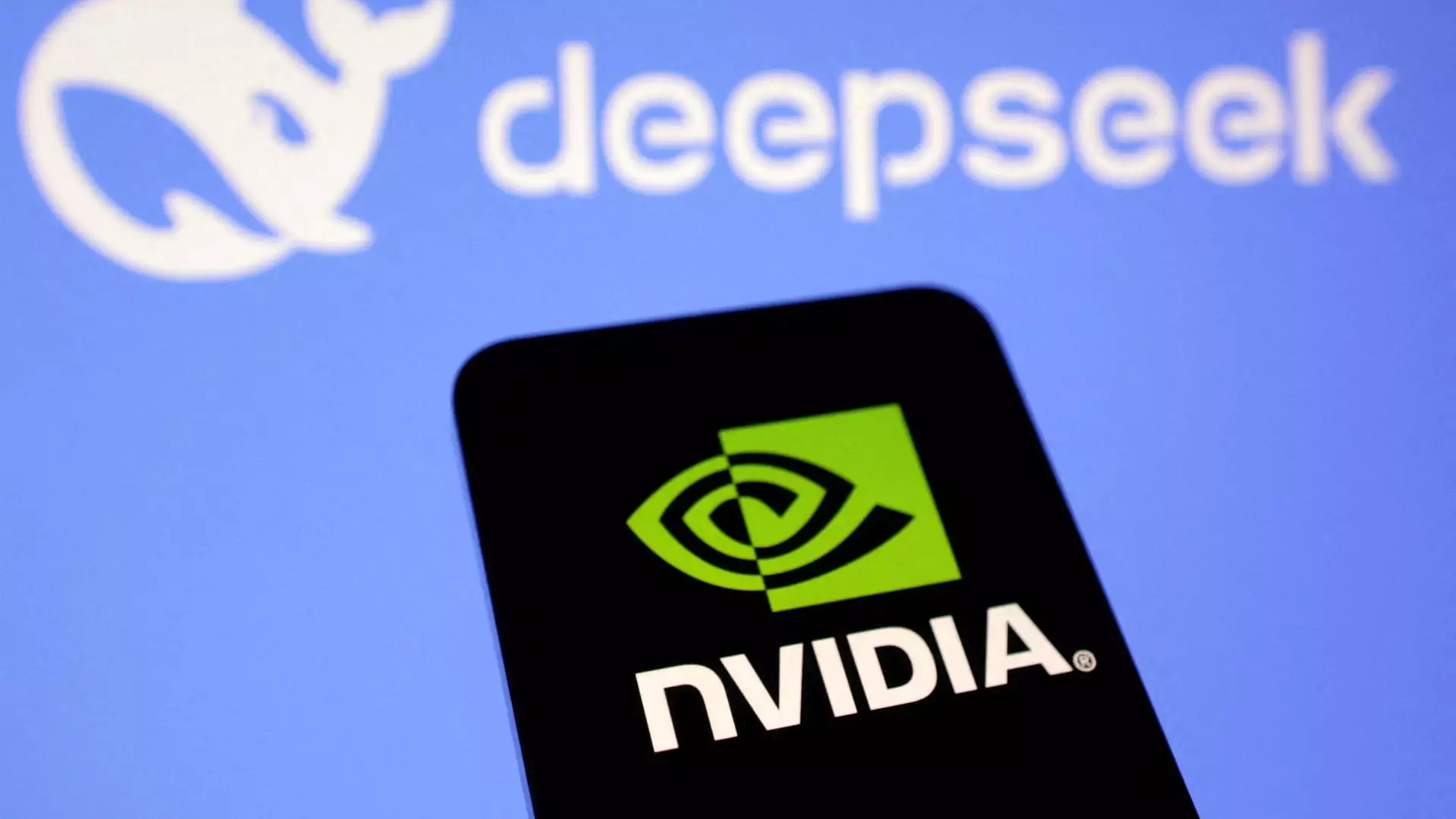The artificial intelligence sector is currently undergoing a significant transformation, markedly influenced by the emergence of the Chinese startup DeepSeek. This company has posed a direct challenge to established giants like Nvidia, resulting in a staggering decline in Nvidia’s market capitalization. While industry leaders are reeling from the consequences of DeepSeek’s breakthrough model, various smaller AI enterprises are recognizing the situation as a pivotal opportunity for growth. By diving into the dynamics set off by DeepSeek, we can better understand the shifting paradigms within the AI ecosystem.
One of the most critical aspects of DeepSeek’s disruptive innovation is its commitment to open-source solutions. Unlike proprietary models from companies like OpenAI, which limit developers to expensive, closed systems, DeepSeek has rolled out an open-source model known as R1. Andrew Feldman, CEO of Cerebras Systems—a company that competes directly with Nvidia—highlighted the enthusiasm surrounding this open-source paradigm. He emphasized that the advent of models like R1 could democratize access to AI tools, diverging from a model where a single entity controls the market.
The open-source model enables developers to modify, share, and innovate upon the existing AI frameworks freely. This creates a fertile ground for collaboration and fuels a vibrant ecosystem of smaller players eager to capitalize on these advancements. In contrast, the conventional closed models often stymie creativity and limit functionality, trapping users within rigid guidelines that are often costly.
As we unpack DeepSeek’s impact, it becomes evident that its influence reaches beyond mere competition; it opens up a dialogue about the nature of AI training and inference. Training, which is resource-intensive and relies on powerful GPU technology, is contrasted sharply with inference, the phase where models are effectively deployed to make decisions or predictions. Phelix Lee, an equity analyst at Morningstar, succinctly captures this distinction, stating, “AI training is about building a tool, while inference is about actually deploying this tool for real applications.”
The shift from training-focused solutions to inference-oriented models marks a significant juncture in the AI market. Nvidia has long dominated the training segment, but as smaller firms leverage DeepSeek’s open-source capabilities, there’s a budding interest in efficient inference technologies. This shift could potentially result in a more diversified technological landscape, where various companies can cater to distinct, specialized needs rather than being overshadowed by a singular provider’s monopoly.
Smaller AI chip firms are seizing the moment catalyzed by DeepSeek’s breakthroughs. With burgeoning demand for chips optimized for inference, several startups have reported a spike in inquiries and projects. Sid Sheth, CEO of d-Matrix, pointed out that smaller open-source models have attained capabilities comparable to their larger proprietary counterparts, but at a fraction of the operational cost. This democratization of technology promotes rapid innovation cycles and a shared collective advancement that can keep pace with increasingly complex demands.
Moreover, Robert Wachen of Etched has noted an observable trend; numerous companies are transitioning their investments away from training-heavy infrastructures toward more inference-centric clusters. This realignment reflects a broader recognition among industry stakeholders that, in an era where rapid scalability is paramount, the infrastructure supporting AI applications must evolve as well.
As seen in reports from both Bain & Company and Wedbush, analysts are increasingly bullish on DeepSeek’s approach and the opportunities it unlocks for the larger AI chip market. If DeepSeek can consistently demonstrate cost-effective methodologies while amplifying the efficiency of inference processes, it stands to reason that overall market adoption rates will surge. This cascading effect is encapsulated by Jevon’s Paradox, which suggests that technological cost reductions can lead to exponential growth in demand.
Sunny Madra, COO at Groq, summed up the shifting landscape succinctly, stating that the constraints faced by giants like Nvidia create unprecedented opportunities for smaller enterprises ready to fill that gap. As AI technology continues to proliferate across various sectors—including enterprise and retail—these companies are poised to thrive in an increasingly crowded marketplace.
The AI landscape is undergoing a watershed moment, with DeepSeek’s disruptive entry altering established hierarchies and inviting innovation from smaller firms. Its open-source model not only encourages a more equitable distribution of AI technologies but also prompts a critical reevaluation of the training versus inference paradigm. As new players emerge and older models are questioned, the future of AI is likely to be characterized by greater variability, collaboration, and democratization. The implications of this sea change extend beyond mere market cap fluctuations; they reflect a fundamental realignment in how artificial intelligence will develop, be accessed, and applied in the years to come.

